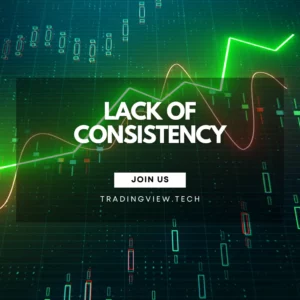Trading in financial markets is not just a numbers game—it’s a psychological battlefield. While technical analysis, market research, and financial models are essential tools in a trader’s arsenal, they can be rendered useless if emotions take control. Emotions like fear, greed, anxiety, and overconfidence can distort perception and decision-making, often leading to irrational actions that contradict a trader’s original plan. One impulsive move—whether it’s jumping into a trade too quickly or refusing to cut losses—can turn a good strategy into a costly mistake.
Emotional decision-making is one of the most pervasive and dangerous pitfalls in trading. It can affect both beginners and seasoned professionals, regardless of experience. Recognizing the psychological triggers behind these emotional responses is the first step toward building a disciplined and rational trading approach. Understanding what drives emotional behavior—and learning how to counteract it—can make the difference between long-term success and chronic losses in the markets.
Understanding Emotional Triggers in Trading
Financial markets are inherently uncertain and dynamic, which creates a fertile ground for emotional reactions. Traders are constantly exposed to new information, price fluctuations, and market sentiment, all of which can provoke strong emotional responses. Some of the most common emotional triggers include FOMO (Fear of Missing Out), fear of loss, and greed—each capable of sabotaging even the most carefully crafted trading strategies.
Fear of Missing Out (FOMO)
FOMO is a powerful and widespread emotion in trading. It often occurs when a trader sees a market rallying or hears about others making substantial profits. The fear that they are being left behind drives them to enter trades impulsively, often at suboptimal entry points. This typically happens without proper analysis or risk consideration, leading to poor outcomes. The irony of FOMO is that it’s driven more by the psychological need to belong or keep up than by rational trading logic. Social media and online trading forums amplify this effect, as traders are constantly exposed to highlight reels of others’ supposed wins—rarely their losses.
Fear of Loss
While FOMO pushes traders to act rashly, the fear of loss can paralyze them or cause them to make equally damaging decisions. This fear can manifest in various ways: closing winning trades too early to “lock in profits,” hesitating to enter a promising position, or, more dangerously, holding onto losing trades in the hope they’ll turn around. The emotional pain associated with taking a loss often feels greater than the satisfaction of an equivalent gain—a psychological principle known as loss aversion. Traders may avoid closing a losing position to avoid the psychological confirmation of failure, turning small losses into major drawdowns.
Greed
Greed in trading can be subtle yet destructive. It drives traders to chase ever-larger profits, ignore risk management rules, and hold onto winning positions longer than advisable. Greed often builds during winning streaks, leading to overconfidence and increased risk-taking. A trader who allows greed to guide their decisions may double down on risky trades, overleverage their positions, or deviate from their trading plan, all in the pursuit of “just a little more.” When the market inevitably turns, the fallout can be severe.
External Amplifiers: Volatility, News, and Social Media
Market volatility magnifies emotional reactions. Fast-moving prices create a sense of urgency, which can override careful planning. Traders may feel compelled to react quickly, which often results in hasty, emotion-driven decisions. News events—such as central bank announcements, geopolitical developments, or earnings reports—can also trigger sharp market moves, inducing panic or euphoria.
In today’s digital age, social media plays a massive role in shaping trader sentiment. Platforms like Twitter, Reddit, and Discord provide instant access to a flood of opinions and rumors. While these can sometimes offer valuable insights, they more often serve as echo chambers that fuel collective fear or hype. Emotional contagion spreads rapidly, encouraging herd behavior and increasing the likelihood of mass irrational decision-making.
The Psychological Impact of Losses and Wins
Emotions in trading aren’t just triggered by external events—they’re deeply rooted in human psychology. One of the most powerful and well-documented cognitive biases affecting traders is loss aversion. Coined by behavioral economists Daniel Kahneman and Amos Tversky, loss aversion refers to the tendency for individuals to prefer avoiding losses rather than acquiring equivalent gains. In simpler terms, the pain of losing $100 feels significantly worse than the joy of gaining $100. This disproportionate emotional response plays a central role in how traders behave after both wins and losses.
The Emotional Weight of Losses
When traders experience a loss, their natural instinct is often to recover it quickly, sometimes by entering another trade without proper analysis—commonly known as “revenge trading.” This reactive behavior typically results in even greater losses. Others might freeze entirely, becoming risk-averse and hesitant to take new opportunities, even when the setups are favorable. This avoidance isn’t just about money—it’s a defense mechanism against the feeling of failure or inadequacy. Losses can undermine confidence, cloud judgment, and lead traders to abandon their strategies entirely.
The Hidden Risks of Winning
Paradoxically, winning trades can be just as psychologically hazardous. A series of successful trades may boost a trader’s confidence, but if unchecked, this confidence can morph into overconfidence. Overconfident traders often believe they’ve “figured out” the market and begin to ignore the very rules that led to their success. They may take larger risks, abandon risk management principles, or believe they can predict market moves without evidence. This false sense of invincibility can lead to major losses when the market inevitably behaves unpredictably.
Furthermore, wins can trigger greed, which distorts decision-making in a different way. Instead of securing profits and moving on, traders may hold onto positions too long, hoping for more. They may increase position sizes beyond what their risk profile allows. In both cases—after losses and wins—the trader’s emotional state becomes the driver, not logic or planning.
Understanding this emotional cycle is crucial. Consistently profitable traders know how to remain emotionally neutral regardless of outcomes. They treat wins and losses as part of the process, not as reflections of their personal worth or skill. This mental detachment is not easy to develop, but it is vital for long-term success.
The Role of a Trading Plan
One of the most effective tools for mitigating emotional decision-making is the trading plan—a structured, rule-based approach that guides every aspect of a trader’s process. A well-designed trading plan acts as a psychological anchor, keeping emotions in check and decisions aligned with long-term objectives rather than momentary impulses.
Why a Trading Plan Matters
Without a plan, trading becomes chaotic. Every market movement feels like a call to action, and traders are left guessing whether to buy, sell, or hold. This mental uncertainty is fertile ground for fear, doubt, and impulsive choices. A trading plan provides clarity. It defines entry and exit criteria, position sizing, risk management rules, and even contingency plans for different market conditions. With these parameters in place, a trader doesn’t have to make critical decisions under pressure—the decisions have already been made in advance, under calm and rational conditions.
Reducing Emotional Interference
By removing the need for spontaneous judgment, a trading plan significantly reduces the emotional load of trading. Instead of reacting to every fluctuation or headline, a disciplined trader checks whether a potential trade fits their predefined criteria. If it doesn’t, they don’t take it. This creates consistency and reduces regret, which are key components of emotional stability in trading.
Accountability and Self-Evaluation
A plan also provides a benchmark for performance evaluation. When things go wrong, traders can review their plan and determine whether the issue was in execution or strategy. This level of accountability promotes growth and minimizes the tendency to blame external factors or get trapped in emotional spirals. It encourages reflection and adaptation, rather than reaction and frustration.
Adapting Without Abandoning
It’s important to note that a trading plan should be flexible enough to evolve with experience and market changes—but that evolution should be methodical, not emotional. Making random changes to a plan after a few losses is counterproductive. Instead, traders should gather data, review performance over a meaningful sample size, and adjust their strategies based on evidence, not emotion.
In essence, a trading plan is the emotional safeguard of a trader. It instills discipline, consistency, and clarity—all of which are essential for navigating the unpredictable waters of the financial markets. Those who treat trading as a business, complete with planning, structure, and review, are far more likely to succeed than those who rely on gut feelings and hope.
Implementing Risk Management Strategies
In the world of trading, risk is inevitable—but mismanaged risk is optional. The difference between consistent traders and emotional ones often boils down to how well they manage risk. Emotions tend to flare when too much is on the line—whether that’s capital, pride, or expectations. Risk management is the safety net that keeps traders grounded, protecting them from catastrophic losses and from the emotional volatility that follows.
Stop Losses and Take Profits
Two of the most essential tools in risk management are stop-loss and take-profit orders. A stop-loss automatically closes a losing position once it reaches a predefined level, limiting the trader’s downside. This prevents emotional decisions like “maybe it’ll come back” or “I can’t accept this loss” from turning a small setback into a major loss.
Similarly, a take-profit order locks in gains at a target level, helping traders avoid the trap of holding on too long out of greed. These tools turn subjective, in-the-moment decisions into automatic actions guided by logic, not emotion. By defining the risk-reward ratio before entering a trade, the trader shifts focus from reacting to price swings to following a consistent strategy.
Position Sizing
Another often overlooked, yet critical component of risk management is position sizing—determining how much capital to allocate to a single trade. Many traders get emotionally attached to a trade when too much is at stake, leading to panic or irrational hope. Keeping positions proportional to the total account size (e.g., risking 1-2% per trade) ensures that no single loss is devastating. This fosters emotional resilience, allowing the trader to think clearly and stay disciplined even in a losing streak.
Ultimately, risk management is the trader’s emotional buffer. It creates a framework that separates the decision-making process from the stress and unpredictability of market movements, allowing the trader to stay objective, strategic, and calm.
Building Emotional Discipline and Self-Awareness
While tools and strategies can help mitigate the effects of emotions, long-term success in trading demands emotional discipline and self-awareness. These qualities aren’t developed overnight—they require deliberate practice and personal insight. A trader’s biggest opponent isn’t the market, but themselves.
Journaling Trades
Keeping a trading journal is one of the most effective ways to build emotional awareness. A journal should include more than just entry and exit points—it should capture the reasoning behind each trade, the trader’s emotional state at the time, and reflections after the trade is closed. Over time, this documentation reveals patterns: impulsive trades after losses, hesitation after drawdowns, overconfidence after big wins. Recognizing these tendencies is the first step toward correcting them.
Mindfulness and Mental Training
Mindfulness techniques, such as meditation or breathing exercises, help traders stay present and reduce the grip of anxiety and stress. When practiced regularly, mindfulness improves emotional regulation, helping traders observe their emotions without being controlled by them. It creates a pause—a moment to choose response over reaction.
Mental exercises, visualization, and even sports psychology techniques used by athletes can also help traders develop the focus and resilience needed to perform under pressure.
Routine and Structure
Having a routine can further support emotional discipline. Trading within specific hours, taking breaks, and avoiding screens after a losing streak can prevent burnout and impulsive decisions. Structure reduces chaos and fosters consistency—two qualities that directly counter emotional turbulence.
The more emotionally disciplined a trader becomes, the more they can trust themselves to make decisions based on logic rather than fear, greed, or frustration.
Using Technology to Reduce Emotional Bias
Technology, when used wisely, can be a trader’s strongest ally against emotional interference. In recent years, a variety of tools have emerged that not only streamline execution but also enforce discipline and reduce impulsive behavior. These tools create automation, objectivity, and data-driven insights—all of which help override emotional bias.
Automated Trading Systems
Automated trading systems execute trades based on predefined rules and algorithms. By taking human emotion out of the execution process, these systems prevent emotional interference such as hesitation, panic-selling, or revenge trading. Traders can program their strategies to include entry/exit criteria, stop losses, and risk limits—allowing the system to carry out decisions exactly as intended.
While automation isn’t for everyone, it can be particularly useful for strategies that require precision and speed, or for traders who struggle with impulsive decision-making.
Alerts and Notifications
For those who prefer to trade manually, alerts and custom notifications can serve as a middle ground. These tools help traders monitor setups passively, without constantly staring at charts. When an asset meets certain conditions, the system sends a signal—allowing the trader to enter a trade without emotional urgency or guesswork.
Data-Driven Tools and Analytics
Performance-tracking platforms and analytics dashboards can help traders evaluate their performance objectively. These tools break down win/loss ratios, average trade duration, risk/reward metrics, and more. Reviewing this data encourages logical assessment rather than emotional storytelling. It’s harder to justify “gut feeling” decisions when the numbers tell a different story.
Ultimately, technology enhances discipline by creating systems and boundaries that reduce the likelihood of impulsive, emotionally charged actions. By embracing these tools, traders can focus more on strategy and execution—and less on second-guessing and stress.



